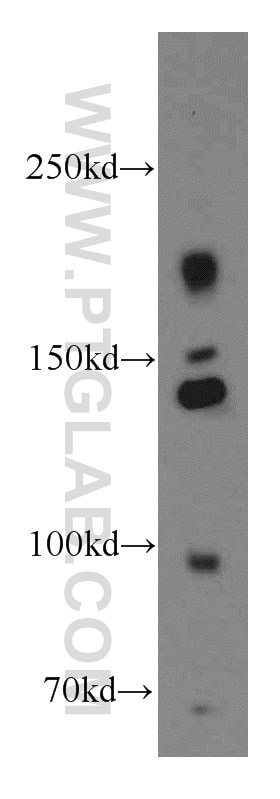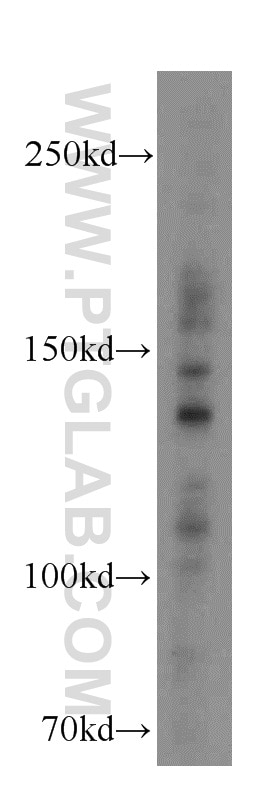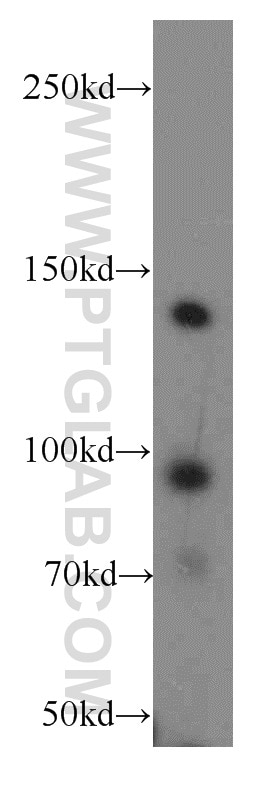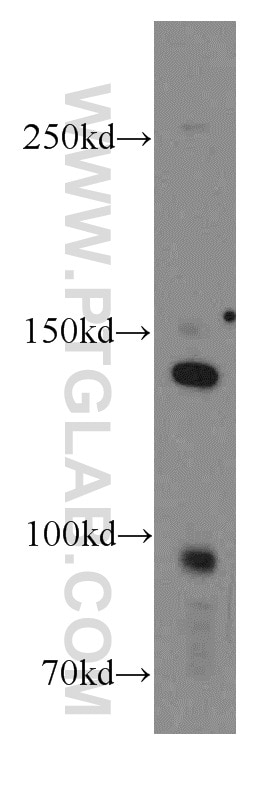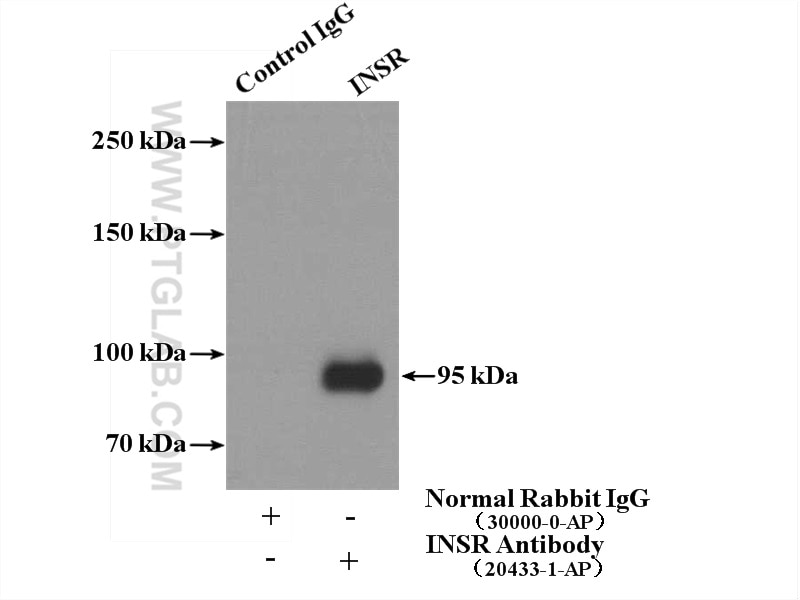INSR/CD220 Polyklonaler Antikörper
INSR/CD220 Polyklonal Antikörper für WB, IP, ELISA
Wirt / Isotyp
Kaninchen / IgG
Getestete Reaktivität
human und mehr (5)
Anwendung
WB, IHC, IF, IP, CoIP, Dot blot, ELISA
Konjugation
Unkonjugiert
Kat-Nr. : 20433-1-AP
Synonyme
Geprüfte Anwendungen
| Erfolgreiche Detektion in WB | HEK-293-Zellen, HeLa-Zellen, HT-1080.Zellen, MCF-7-Zellen |
| Erfolgreiche IP | HeLa-Zellen |
Empfohlene Verdünnung
| Anwendung | Verdünnung |
|---|---|
| Western Blot (WB) | WB : 1:500-1:2000 |
| Immunpräzipitation (IP) | IP : 0.5-4.0 ug for 1.0-3.0 mg of total protein lysate |
| It is recommended that this reagent should be titrated in each testing system to obtain optimal results. | |
| Sample-dependent, check data in validation data gallery | |
Veröffentlichte Anwendungen
| WB | See 29 publications below |
| IHC | See 1 publications below |
| IF | See 1 publications below |
| CoIP | See 1 publications below |
Produktinformation
20433-1-AP bindet in WB, IHC, IF, IP, CoIP, Dot blot, ELISA INSR/CD220 und zeigt Reaktivität mit human
| Getestete Reaktivität | human |
| In Publikationen genannte Reaktivität | human, Fisch, Hausschwein, Maus, Ratte, Zebrafisch |
| Wirt / Isotyp | Kaninchen / IgG |
| Klonalität | Polyklonal |
| Typ | Antikörper |
| Immunogen | INSR/CD220 fusion protein Ag13922 |
| Vollständiger Name | INSR |
| Berechnetes Molekulargewicht | 1382 aa, 156 kDa |
| Beobachtetes Molekulargewicht | 190 kDa, 135 kDa, 95 kDa |
| GenBank-Zugangsnummer | BC117172 |
| Gene symbol | INSR |
| Gene ID (NCBI) | 3643 |
| Konjugation | Unkonjugiert |
| Form | Liquid |
| Reinigungsmethode | Antigen-Affinitätsreinigung |
| Lagerungspuffer | PBS with 0.02% sodium azide and 50% glycerol |
| Lagerungsbedingungen | Bei -20°C lagern. Nach dem Versand ein Jahr lang stabil Aliquotieren ist bei -20oC Lagerung nicht notwendig. 20ul Größen enthalten 0,1% BSA. |
Hintergrundinformationen
The biological effects of INS are mediated by a membrane-spanning cell surface receptor that has been shown to consist of disulfide-linked alpha-subunits (135 kDa) and beta-subunits (95 kDa) that are cleaved products of a common precursor. The binding of INS to the receptor extracellular domain results in intracellular activation of a tyrosine-specific kinase activity and the generation of signals that determine the cellular response (PMID: 2369896). This antibody raised against 980-1382aa of human INS receptor can recognize full-length INS receptor precursor and INS receptor beta subunit.
Protokolle
| PRODUKTSPEZIFISCHE PROTOKOLLE | |
|---|---|
| WB protocol for INSR/CD220 antibody 20433-1-AP | Protokoll herunterladen |
| IP protocol for INSR/CD220 antibody 20433-1-AP | Protokoll herunterladen |
| STANDARD-PROTOKOLLE | |
|---|---|
| Klicken Sie hier, um unsere Standardprotokolle anzuzeigen |
Publikationen
| Species | Application | Title |
|---|---|---|
Environ Health Perspect Effects of Chronic Secondhand Smoke (SHS) Exposure on Cognitive Performance and Metabolic Pathways in the Hippocampus of Wild-Type and Human Tau Mice. | ||
Int J Biol Macromol Lycium barbarum polysaccharide mitigates high-fat-diet-induced skeletal muscle atrophy by promoting AMPK/PINK1/Parkin-mediated mitophagy | ||
Food Funct l-Theanine regulates glucose, lipid, and protein metabolism via insulin and AMP-activated protein kinase signaling pathways | ||
Br J Surg MiR-128 regulation of glucose metabolism and cell proliferation in triple-negative breast cancer. | ||
FASEB J Angptl7 promotes insulin resistance and type 2 diabetes mellitus by multiple mechanisms including SOCS3-mediated IRS1 degradation. | ||
Sci Rep NaoXinTong Capsules inhibit the development of diabetic nephropathy in db/db mice. |
Rezensionen
The reviews below have been submitted by verified Proteintech customers who received an incentive for providing their feedback.
FH Mi (Verified Customer) (05-29-2023) | It works well in human white adipocytes, we get strong signals
|
FH Chiara (Verified Customer) (10-04-2021) | Works well but three bands
|
FH Boyan (Verified Customer) (06-06-2021) | This antibody recognized a band at ~ 180 kd only, which is sensitive to PNGaseF, but not EndoH, treatment. The size is much bigger than an expected InsR band. Importantly, stripping the membrane and re-blot with another InsR antibody from a different brand could detect the protein at the expected MW. These results suggest this InsR antibody is detecting something other than InsR.
|
